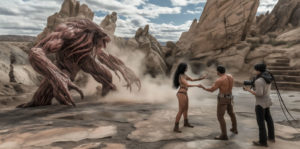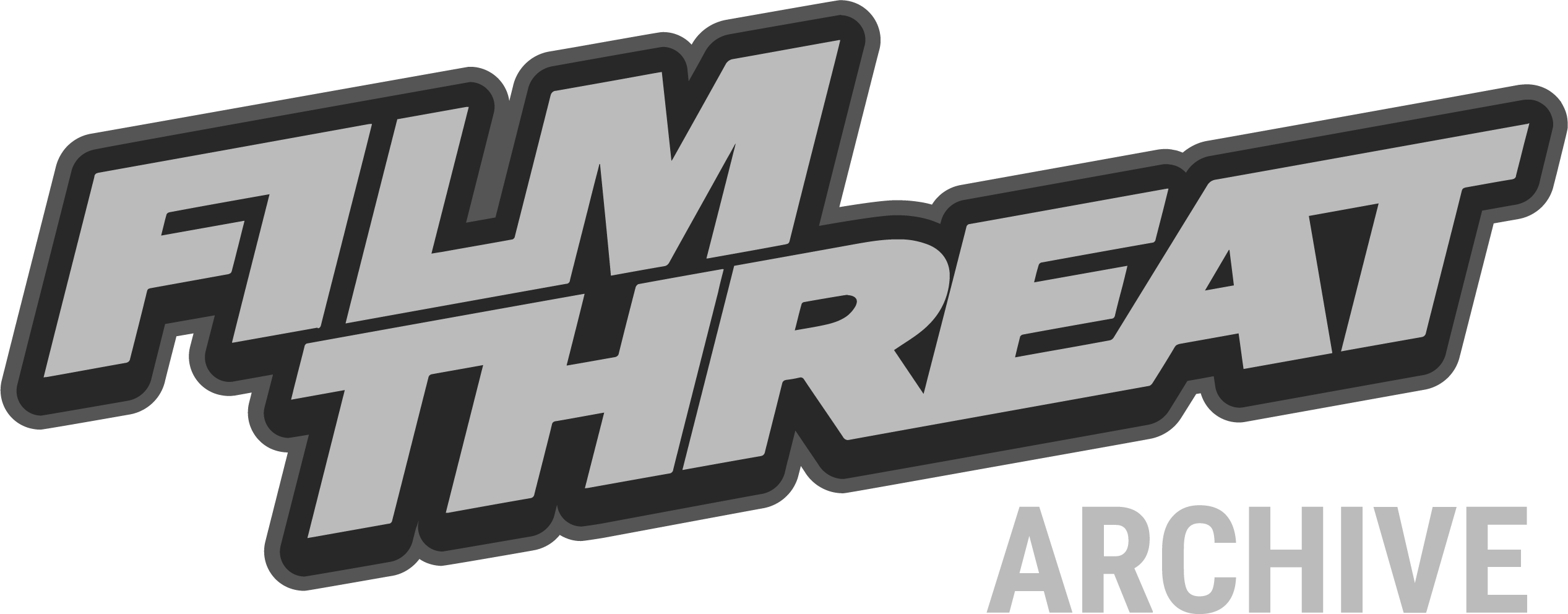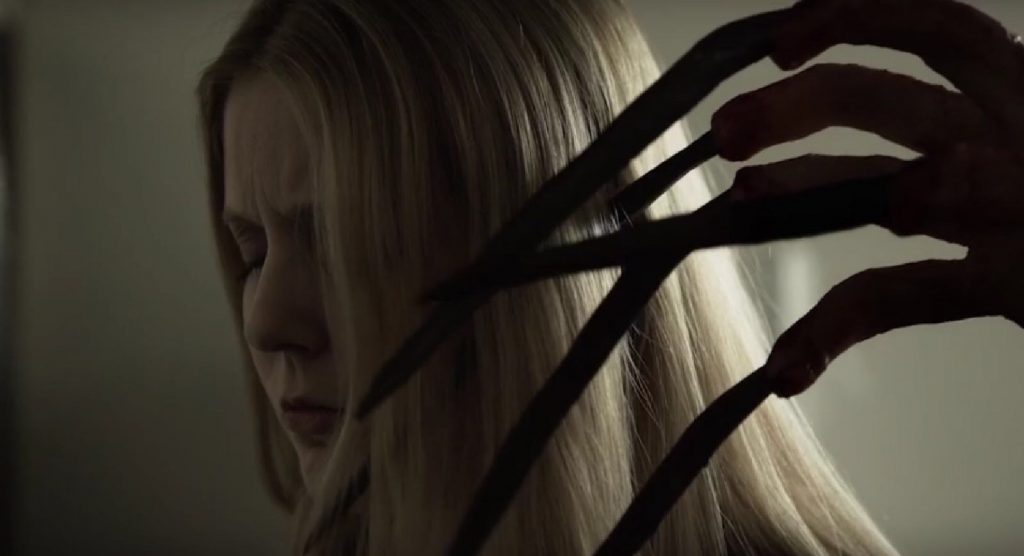
Much like Robert Rodriguez’s first movie, El Mariachi, I made my feature-length directorial debut with a way too ambitious horror movie called The Quantum Terror, which took me from shooting with actors on Styrofoam sets built in my garage to accepting 2023’s ‘Award This’ for Best Indie Horror Movie. As an indie filmmaker, you’re armed with a camera, a vision, maybe a green screen or a small set like mine, and a passion to tell stories. But as much production value as I managed to bring to the table with what was available then, just a few years later, artificial intelligence is elevating the game to a degree that, with enough imagination, your film will look like it could screen alongside the big Hollywood blockbusters. AI is our secret weapon, amplifying your creativity while keeping what matters to us, our camera work, actors, and sets at the core. Here are five ways I’ve thought of that can elevate your production value, letting you craft a cinematic masterpiece from a modest setup without losing your artistic control.
#1: Making Old-School Stop Motion and Practical Effects New Again
I love stop motion and practical effects, and put both of them into The Quantum Terror as staples. However, on a budget, they unfortunately feel quaint to today’s movie-going audiences, not because they don’t look good, but because the appreciation for their charm has been trained out of them by more polished CGI spectacle. However, working with our hands is still important to us as storytellers. It helps us to stay engaged with our work, using all of our senses to find our way through the work. AI can offer us a bridge between the two worlds by allowing us to manipulate puppets frame by frame if need be, but filling in those gaps to make it look smoother and more lifelike, rivaling big-studio animations. If you’re shooting a stop-motion scene with clay figures or puppets in your garage, AI tools like RunwayML can enhance the footage. They can blend frames for fluid motion, eliminating that jerky feel, or interpolate key-frames to add subtle movements, like a character’s hair swaying. AI can also add realistic textures that you may not be able to refine on your own, such as worn leather or glistening scales, and simulate cinematic lighting, like soft moonlight or harsh sunlight. Your handcrafted puppets and carefully framed shots remain the heart of the story, while AI polishes them into a professional, Hollywood-level finish.
#2: Cinematic Set Extensions and Impossible Locations
AI can expand your environments beyond the limits of your physical set. Picture a small sci-fi lab corner in your garage or a green-screen backdrop. With tools like Stable Diffusion, you input a photo of your set and generate a sprawling background, perhaps a futuristic city or a haunted forest. You can populate it with digital extras, like cyberpunk citizens, ghostly figures, or racy brothel workers, without hiring excessive amounts of background actors, which will also cost you in insurance, time, food, and space. You can create a vast landing field for spaceships as they come and g,o or fill a Victorian household with trophies from a safari. AI ensures these elements match your footage’s lighting and style, blending seamlessly with your actors’ performances. Your camera work and practical set provide the foundation, and AI builds a vibrant world around them, giving your film epic scope.
#3 For Stunts or Impossible Scenes
AI lets you create jaw-dropping moments that seem out of reach for indie budgets. Imagine filming an actor walking to a prop edge in your garage, meant to be a cliff. You take the final frame and feed it into Kling AI, prompting the actor to leap off and soar like a superhero, angel, demon, or witch through a golden sky. The AI generates a dynamic sequence, complete sweeping camera angles, integrated with your footage. Whether it’s a sci-fi chase or a fantasy duel, your actors’ emotions and your shot composition drive the scene, while AI adds the spectacle.
#4 Brutality and Gore
Horror filmmakers can use AI to craft terrifying, visceral sequences. Picture yourself recording an actor cowering against a green screen, reacting to an unseen threat. Using the final frame, you prompt RunwayML to generate a grotesque monster, perhaps a tentacled beast lunging forward, opening a gory wound, splitting open with uncoiling guts. AI matches the creature or effect to your footage’s mood and lighting, creating a seamless blend. Your actors’ raw fear and your carefully framed shots fuel the horror, while AI delivers the nightmarish details that make audiences squirm.
#5 Post-Production
AI ties everything together in post-production, polishing your film to a Hollywood sheen. Tools like Da Vinci Resolve color-grade your footage for a cinematic look, perhaps a moody palette for horror or a vibrant glow for sci-fi, unifying practical and AI-generated elements. Along with plugins in After Effects you can add subtle visual elements, like fog or energy trails, to enhance stop-motion textures or monster attacks. Platforms like ElevenLabs generate chilling roars or ambient drones, synced to your actors’ movements. AI might suggest editing tweaks, like a faster cut for tension, but you decide. Your camera work, performances, and sets remain the foundation, and AI refines them into a professional product.
Again, I’m not saying that you should use AI to do everything. We didn’t get into this business to sit behind a computer all day, unless VFX is the dream, but AI empowers you to compete with big studios without a big budget. Tools like RunwayML, Nim.Video, Kling, Krea, and Minimax starting at around fifteen to twenty-five dollars a month, or free options like Stable Diffusion are accessible, with tutorials online to guide you. Your garage, a few props, some decent computing power, and your vision are enough. Your shots, actors, and story stay central, while AI enhances them, proving the next blockbuster can come from your own hands.
I’ve said it before, and I’ll say it again: don’t let other people tell you how you can and can’t create.
"…AI is our secret weapon, amplifying your creativity while keeping what matters to us, our camera work, actors, and sets at the core."

